Paul Rotha’s Missing Legacy
posted July 8, 2011 3 Comments
![]()
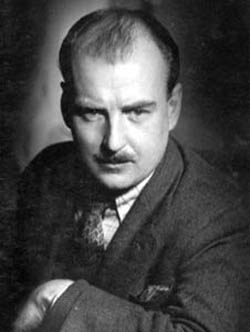
In his portrayal of the building of a giant ocean liner, Rotha captured the grand scale of the endeavour; the physicality and simple humanity of drillers, platers, welders, and riveters as they crafted the massive, emerging vessel; and the striking materiality of shipbuilding. In grainy, close-up black and white, Shipyard has an epic quality, reminiscent of both the pomp of Soviet-era propaganda but also the profound humanity of, say, Roy DeCarava’s photographic portraits of workaday Harlem of about the same time.
Commentator Tim Boon wrote of Shipyard, on his entry on the British Film Institute’s Screenonline guide: “With the eye of a painter, he composed his shots and waited for good light. …The aesthetic of liners as modern wonders had also excited Le Corbusier, and Rotha’s film is a true modernist testament.”
Rotha seems, on the strength of Shipyard, and a few other films he made early in his career – Contact (1933), Face of Britain (1935) – to be a shoe-in for a place in the pantheon of British film. And yet, by the time he died in 1984, he had already ceased to command his deserved regard. He had continued to make documentary films that were noteworthy in many respects, and had even turned his hand to two fiction films and to television programming; but his output had been haltering and uneven – at times, clunky and mannered.
How Rotha (1907-1984) slipped from view is the question for speakers and attendees at a September 8-10 2011 conference about the filmmaker at the University of Leeds.
“Rotha’s legacy is not very well understood or researched,” says organizer Leo Enticknap, a former moving-image archivist and now lecturer in cinema at the Institute of Communications Studies at the University of Leeds who specializes in the political history of non-fiction film and television, the history of moving-image technologies, and the practice and ethics of archival film preservation and restoration. “Among people who know about British film history, he’s a known name; among people who aren’t, he’s virtually unknown. This is part of the reason we’re putting this conference on.”
Some scholars have noted over the last decade or so that Rotha merits renewed attention. In their preface to the 1999 volume,
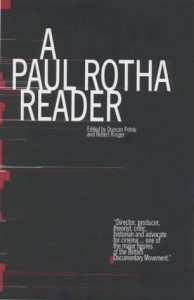 A Paul Rotha Reader (University of Exeter Press), Duncan Petrie and Robert Kruger wrote: “The need to reassess the contributions of Paul Rotha to film culture may at first appear a rather odd proposition. He was, after all, widely acknowledged as one of the key figures – second perhaps only to John Grierson – of the British documentary movement in his capacity as both film-maker and critic.”
A Paul Rotha Reader (University of Exeter Press), Duncan Petrie and Robert Kruger wrote: “The need to reassess the contributions of Paul Rotha to film culture may at first appear a rather odd proposition. He was, after all, widely acknowledged as one of the key figures – second perhaps only to John Grierson – of the British documentary movement in his capacity as both film-maker and critic.”
They added: “His many films…stand as landmarks in the history of the British documentary. His books were, for many years, standard texts in film history and theory.” And yet, Petrie and Kruger said, “it is fair to say that since his death in 1984, appreciation of his contribution to film-making and particularly to the development of film theory and criticism has gradually drifted into obscurity.”
Enticknap agrees. Even the devoted British art-house or repertory cinemagoer is more likely to be aware of the still-prominent documentary maker John Grierson (1898-1972), wartime story-documentaries, or even the gritty 1960s social realism of Ken Loach, in his fiction and nonfiction films. “They’d be very unlikely to give you Rotha’s name,” says Enticknap. “He was a very well-known major figure during his lifetime but slipped into obscurity very quickly afterwards.”
Why?
Petrie and Kruger noted that the documentary itself had been “relegated to the sidelines by revisionist approaches to British cinema history, and Rotha’s work (films and writing) rarely appears on the rapidly growing number of film studies programmes on offer in British universities and colleges.”
John Grierson’s influence – “his very didactic, public-service, what I call filmed-debate model of documentary” – partly undermined Rotha’s work, Enticknap says. The Scottish Grierson came to be known as the father of the British documentary, and even is often credited with devising the term “documentary,” in 1926 – “a creative treatment of actuality,” is how he described such a work. Says Enticknap: “His argument was that he wanted a kind of film equivalent to the BBC, a direct kind of government-information model of filmmaking. Because Grierson was a bigger political figure, he kind of rammed that through to become the dominant norm.”
He also was championed by Alfred Hitchcock, no small fillip to a reputation in British film.
Grierson, along with other renowned filmmakers of the day including Humphrey Jennings, were employed by the GPO (1933-1940) and its successor Crown Film Unit, under the control of the British Ministry of Information, and saw themselves as part of a sort of government information service. “Rotha always was a bit more at arm’s length from that. That’s partly why he tends to have been forgotten,” says Enticknap.
Rather than choose to work for the government, Rotha chose to be a “jobbing filmmaker” who made sponsored films. Shipyard, for example, was produced by Gaumont-British Instructional; Contact was basically a publicity film for Imperial Airways; The Fourth Estate was commissioned by the Times.
Rotha, says Enticknap, “rejected a lot of John Grierson’s dogma on what the documentary should and shouldn’t be. Given that a lot of the history of the documentary movement was initially written by Grierson’s acolytes and then challenged by his detractors, the end result is that Rotha is often talked about in a peripheral way when it comes to discussions about Grierson; but his contribution to British and European film culture and to the non-fiction film more specifically tend to have been overlooked.”
Within both filmmaking and writing about film, fashions rightly or wrongly overtook Rotha, says Enticknap. His 1930 book, The Film Till Now: A Survey of the Cinema, along with Terry Ramsaye’s A Million and One Nights: A History of the Motion Picture (1926), was among the first attempts to write a general history of the cinema. “Rotha’s book made a lot of waves when it first came out, but by today’s standards it’s film history out of the ark, if you like,” says Enticknap. “He really celebrated the European movements, so there’s a lot in the book about Eisenstein, about Dr Caligari and German Expressionism, all of the European arty stuff that rejected the domination of Hollywood is there in that book.”
For 20 years, the book was the only major book in England, until Roger Manville’s Experiment in the Film (1949) came along, says Enticknap. Certainly the impact of The Film Till Now worth looking at again, reveal quite a bit about European film culture, in general, and where that has left us in a historical sense.
Also of interest is why the book continues to be held in high regard in Japan, a curiosity that will no doubt be canvassed in Leeds.
Among “British Film Institute types,” Rotha’s approach was powerfully influential, but when film-studies approaches arrived in the 1950s and 1960s, Rotha’s qualitative approach lost out to the theoretical approaches of auteurism, Marxism, and semiotics. Rotha’s approach “suddenly seemed very, very out of date” and little stock has since been taken of it, Enticknap says. “Still, the European art cinema exerts a very strong influence. You will see DVDs of German Expressionist films in the big video shops, today; if it hadn’t been for what he did as a critic and a writer, it’d be less likely we’d be seeing that.”
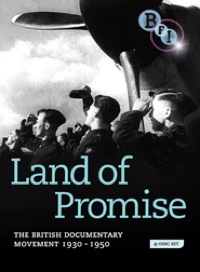 As for his filmmaking, it too came to seem outmoded to many filmmakers and critics. Survey British documentaries of the 1930s to 1950s that were recently collected on the DVD Land of Promise: The British Documentary Movement 1930-1950, and it becomes immediately apparent how far their stylizations are from those that hold sway, today, even though the work at times rose to heights rarely equaled, since.
As for his filmmaking, it too came to seem outmoded to many filmmakers and critics. Survey British documentaries of the 1930s to 1950s that were recently collected on the DVD Land of Promise: The British Documentary Movement 1930-1950, and it becomes immediately apparent how far their stylizations are from those that hold sway, today, even though the work at times rose to heights rarely equaled, since.
But those were still early days for the development of documentary syntax, and many filmmakers struggled to find consistent voice and style. This is as true of Rotha as any of his peers. His accomplishments ranged erratically from enormous to cringeworthy. By seemingly general agreement among film historians, his 1930s films – Contact, Face of Britain, and Shipyard – were his finest. European avant-garde traditions, in visual and film art, strongly influenced them. As a young man Rotha had trained in design and graphics at the Slade School of Fine Art, a highbrow art institute in London. Says Enticknap: “He was knocking around with a lot of avant-garde visual artists. Just like Hitchcock went to Germany in the ’20s, and that influenced him a lot, Rotha was influenced by that, as well.”
(It was at this time that he changed his name from Paul Thompson to Paul Rotha at the recommendation of a professor who believed his student’s birth name was just too mundane to make a mark in the arts. See Sarah Easen’s entry on Rotha on Reference Guide to British and Irish Film Directors.)
Rotha was also active in producing, running companies that fostered the development of the independently produced documentary in Britain. He aided the early careers of the likes of J.D. Chambers, John Page, and Paul Dickson. Among his productions was The Way to the Sea (1936), which boasted commentary by W.H. Auden and music by Benjamin Britten.
http://www.youtube.com/watch?v=4SenJqzegVU
Rotha’s extraordinary 1961 The Life of Adolf Hitler would, among many contenders, came to serve as a model for later portraits of the dictator.
http://www.youtube.com/watch?v=K4SANInxm7s
But clunky stylization and political tub-thumping mar much of Rotha’s other later work, such as World of Plenty (about world hunger) (1943) and Land of Promise (1945). In the latter, he leadens an already rather heavy-handed message about England’s failures in housing its people with such scenes as three mates engaging in a staged debate in a pub. Not helping are Rotha’s self-consciously presented but naïve animated diagrams of iniquitous social phenomena. As Patrick Russell comments on BFI Sceenonline: “Rotha’s spasmodically brilliant films typically convey cerebral rationalism with high passion: an unstable combination, and here both tendencies reach feverish extremes.”
Enticknap agrees: “He’s desperately trying to make his subject visually and dynamically exciting, while at the same time he’s got the Grierson legacy breathing down his neck, making it like a filmed debating society, and the clash of the two don’t really work.”
In sum, “there’s a huge difference between Contact and Shipyard, at one end of his career, and Land of Promise and, say, A City Sleeps, at the other,” Enticknap says. Still, “in many ways Rotha was the archetypal product of the inter-war European minority/alternative film culture, but unlike most of the other major figures associated with it, he straddled both the arty/avant-garde aspect – for example, his veneration of German and Soviet cinema in The Film Till Now – and the documentary-realist.”
The Archiving Picture
Full-scale preservation has been carried out on all, or almost all, Rotha’s filmography from Contact onwards, and decent 35mm prints are available of most titles, most from either the British Film Institute or the Imperial War Museum Collections.
De Overval, (The Silent Raid, 1962), which Rotha made for a Dutch company, reconstructing a secret-service operation in occupied Holland, is an “orphan film” because the company that hired him to make it went out of operation and the film’s rights became hopelessly complicated. The Nederlands Filmmuseum has restored it, but it has rarely been shown, although it will likely be screened at the Leeds conference.
Also likely to be shown is The Fourth Estate: A Film of a British Newspaper, whose title describes its subject and explains why The Times sponsored it. It had to be preserved through duping from a release print, “but even so the BFI’s viewing copy is crisp and contrasty,” says Enticknap. It was never publicly screened, at the time of its completion, supposedly because it depicted peacetime London, and war had broken out. But Enticknap says: “In my opinion the film is quite a revelation, showing Rotha’s love of Soviet-style fast cutting and weird camera angles, and deepens the mystery as to whether its sponsor really wanted it suppressed, and if so why.”
While the restoration record is good, considering how far Rotha’s star faded, the public availability of Rotha’s work is more patchy. Of his substantial films, only Land of Promise and Shipyard have been issued on DVD – on Land of Promise: The British Documentary Movement 1930-1950, which also has a couple of Rotha shorts. By contrast, the entire mainstream documentary-film output of the GPO Film Unit of John Grierson and his acolytes is now published on DVD.
British government-sponsored films remain popular, thanks to nostalgia. One of the highest-selling DVDs in the U.K. last year was a compilation of films from the Central Office of Public Information – how to obey green crossing lights, why not to take your air bed on beach holidays… “Those DVDs flew off shelf, and that’s the cultural tradition that Grierson started,” says Enticknap.
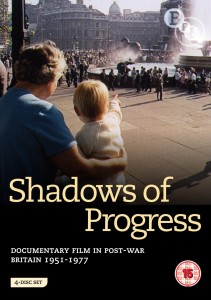 Not surprisingly, sponsored industrial filmmaking provokes far less sentiment among the viewing public. “That kind of filmmaking is an area that a lot of work has been done in in the U.S., mainly by Rick Prelinger, but also by the growing orphan-film movement, but that kind of work hasn’t really been done in Britain, at all. Or, at least, Patrick Russell made a start with his Shadows of Progress book and the BFI DVD [Shadows of Progress: Documentary Film in Post-War Britain] that came out earlier this year; but we really are only scratching the surface of that sort of thing, and I would hope that relooking at Rotha would get us a little further forward on that.”
Not surprisingly, sponsored industrial filmmaking provokes far less sentiment among the viewing public. “That kind of filmmaking is an area that a lot of work has been done in in the U.S., mainly by Rick Prelinger, but also by the growing orphan-film movement, but that kind of work hasn’t really been done in Britain, at all. Or, at least, Patrick Russell made a start with his Shadows of Progress book and the BFI DVD [Shadows of Progress: Documentary Film in Post-War Britain] that came out earlier this year; but we really are only scratching the surface of that sort of thing, and I would hope that relooking at Rotha would get us a little further forward on that.”
Rotha did not exactly work diligently to secure a similar place in British film. But he was also a sometime Communist Party member with a famously difficult – “maverick” – personality. Then, there came television, to eclipse cinema and pose a challenge for many filmmakers. Unlike most of his contemporaries, Rotha did try his hand at small-screen production, but he failed at that. His The Challenge of Television (1956), says Enticknap, “is very clunky and didactic, stern-voiced commentator lecturing you, a world away from his early stuff.” In the late 1960s, BBC Television fired Rotha, its first head of documentary, because he appeared incapable of making films in a television rather than cinema style, and for being bossy about it.
Still, Enticknap says, considering Rotha’s response to the advent of TV “will tell us about how the role of moving images in society really started to change when that happened.”
All this left Rotha quite disillusioned and even embittered. In the late 1970, when UCLA purchased many film collections, it acquired Rotha’s work. At the end of his life, having failed to make good provision for his retirement, he was impoverished and by all accounts resentful about being neglected. With dwindling prominence and success, “he died in poverty and on the verge of being made homeless,” says Enticknap.
By deciding that his collection would go to UCLA, he ensured his continued marginalization in British film studies. Reportedly his work is seldom consulted at UCLA, in part no doubt because few British scholars would think to look that far afield, or would be able to afford to.
Still, Enticknap and his colleagues have been able to gather, for the conference, keynote speakers who are prominent researchers of British film history. Among them is Charles Barr, who founded the film department at the University of East Anglia in the early 1970s and is now professor of film and television at University College Dublin; his standard works include All Our Yesterdays: 90 Years of British Cinema (BFI, 1987).
Also scheduled to address the conference is Brian Winston, the Lincoln chair of communications at the University of Lincoln, UK, whose study of ethical issues in documentary making, Lies, Damn Lies and Documentaries (BFI, 2000) critically examined the Grierson school.
Nicholas Pronay, a professor emeritus of communications studies at Leeds and “living link” to the early British documentary movement – he worked at various times with Grierson – will provide first-hand historical perspective, while Tim Boon, chief curator at the Science Museum in London, will lend his expertise in industrial and technical nonfiction films in discussing Contact and Shipyard.
Perhaps they can revive Rotha. “He is,” says Enticknap, “someone who should have been a major figure, along with Grierson, Hitchcock, Carol Reed, and those sorts of people.”
But he is not.
He is, however, big in Japan. In the 1980s The Film Till Now was translated into Japanese, and it remains a standard text in Japanese film schools, even today.
Previous Post: Bernard Herrmann Hits 100
Next Post: A British Documentarian Gone Missing

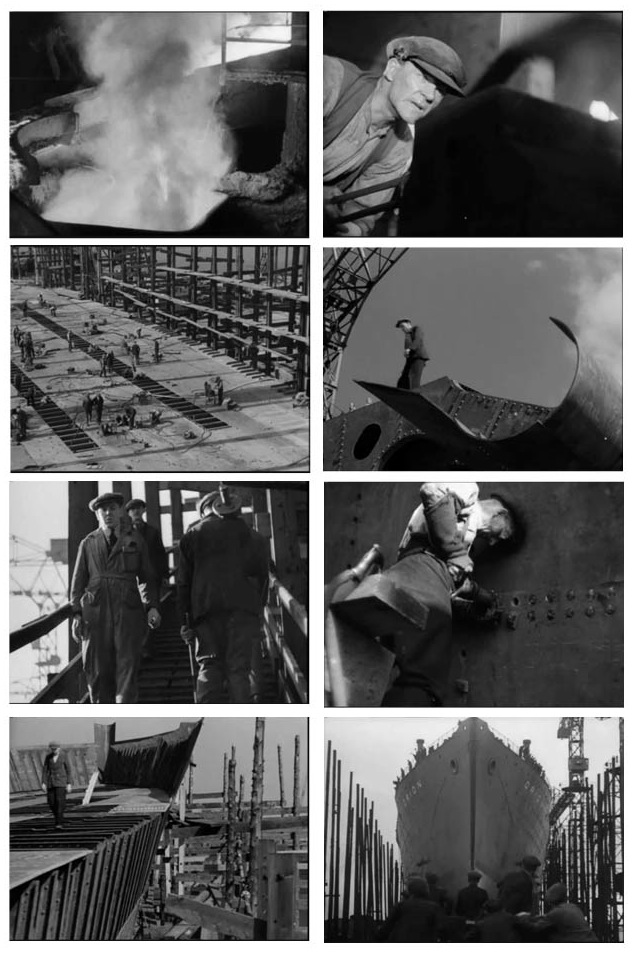


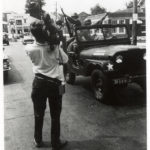
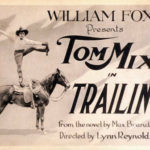
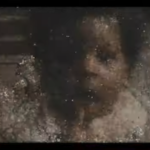
He was my brother in law my sister was constance smith
glad to see some recognition finally coming to Rotha- very neglected film-maker and sad that both he and Irish actress Constance Smith ended up in poor circumstances.
Intrigued by Smith’s career -our archive has most of her films and on our suggestion she is featured in Ruth Barton’s ACTING IRISH IN HOLLYWOOD book
Declan McLoughlin
LIMERICK FILM ARCHIVE
Very very interesting. Thank you for this article.
Noeleen, your brother in law was a terrific filmmaker!